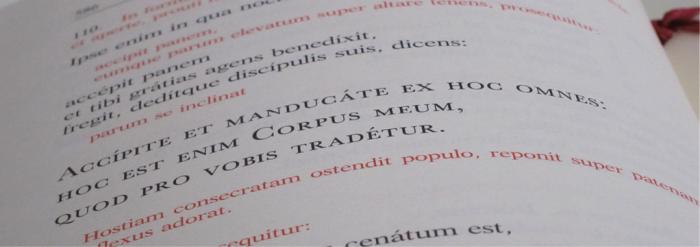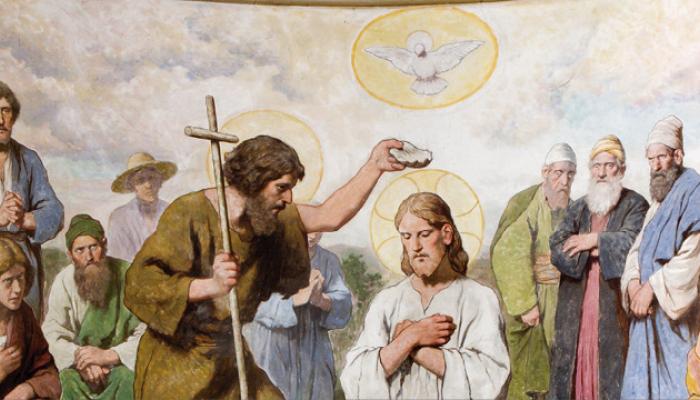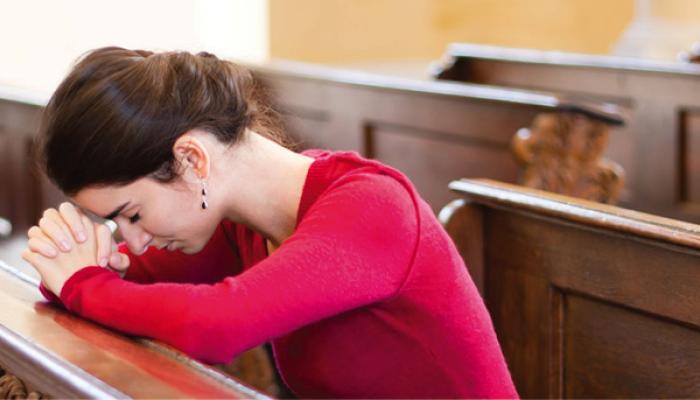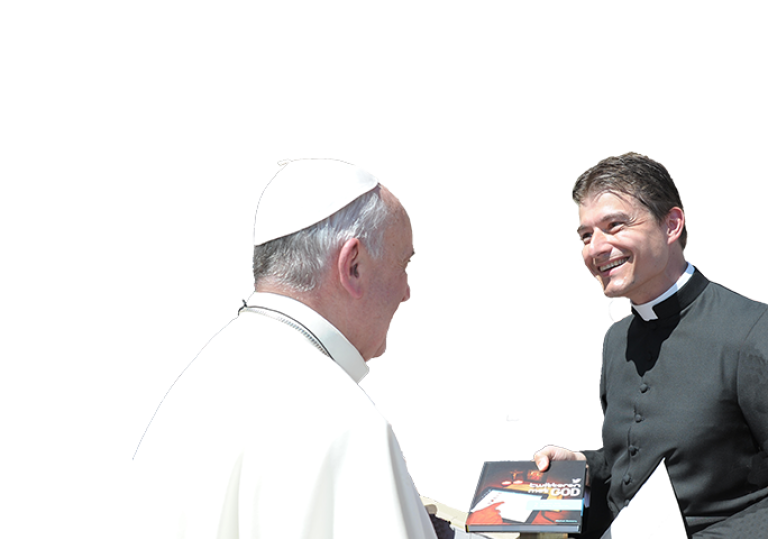
3.24 Çka është Liturgjia?
Fjala "liturgji" vjen nga greqishtja dhe do të thotë shërbim publik. Liturgjia është “tërësia e simboleve, himneve dhe veprave me të cilat Kisha manifeston dhe shpreh adhurimin e saj ndaj Zotit” (Dom Guéranger). Në liturgji ne shprehim atë që besojmë [> 3.25], ashtu si gjuha e trupit tonë shpreh atë që duam të themi. Edhe më e rëndësishmja, në liturgji ne marrim hirin e Zotit dhe praninë e Tij.
Liturgjia ka të bëjë me diçka më të madhe se vetja; ka të bëjë me Zotin. Liturgjia e Kishës Katolike Romake është e njëjtë në të gjithë botën. Kjo do të thotë që ju mund ta ndiqni meshën kudo, edhe nëse nuk e kuptoni gjuhën: të gjitha gjestet dhe veprimet mbeten të njëjtat. Aplikacioni #TwGOD [>The app] mund t'ju ndihmojë me këtë: ai përmban tekstet standarde të meshës në shumë gjuhë, për t'ju ndihmuar të merrni pjesë në liturgji kudo që të jeni.
What is liturgy?
Liturgy is the official divine worship of the Church.
A Liturgy is not an event that depends on good ideas and great songs. No one makes or invents a liturgy. It is something living that grew over millennia of faith. A Mass is a holy, venerable action. Liturgy becomes exciting when one senses that God himself is present under its sacred signs and its precious, often ancient prayers. [Youcat 167]
What is the essence of every liturgy?
Liturgy is always in the first place communion or fellowship with Jesus Christ. Every liturgy, not just the celebration of the Eucharist, is an Easter in miniature. Jesus reveals his passage from death to life and celebrates it with us.
The most important liturgy in the world was the Paschal liturgy that Jesus celebrated with his disciples in the Upper room on the night before his death. The disciples thought that Jesus would be commemorating the liberation of Israel from Egypt. Instead, Jesus celebrated the liberation of all mankind from the power of death. Back in Egypt it was the “blood of the lamb” that preserved the Israelites from the angel of death. Now he himself would be the lamb whose blood saves mankind from death. For Jesus’ death and resurrection is the proof that someone can die and nevertheless gain life. This is the genuine substance of every Christian liturgy. Jesus himself compared his death and resurrection with Israel’s liberation from slavery in Egypt. Therefore, the redemptive effect of Jesus’ death and resurrection is called the Paschal mystery. There is an analogy between the life-saving blood of the lamb at the exodus of the Israelites fromEgypt (ex 12) and Jesus, the true Paschal lamb that has redeemed mankind from the bondage of death and sin. [Youcat 171]
What is the most profound origin of the liturgy?
The most profound origin of the liturgy is God, in whom there is an eternal, heavenly banquet of love—the joy of the Father, the Son, and the Holy Spirit. Because God is love, he would like to let us participate in the feast of his joy and to grant us his blessings.
Our earthly liturgies must be celebrations full of beauty and power: Feasts of the Father who created us—that is why the gifts of the earth play such a great part: the bread, the wine, oil and light, incense, sacred music, and splendid colors. Feasts of the Son who redeemed us—that is why we rejoice in our liberation, breathe deeply in listening to the Word, and are strengthened in eating the eucharistic Gifts. Feasts of the Holy Spirit who lives in us—that is why there is a wealth of consolation, knowledge, courage, strength, and blessing that flows from these sacred assemblies. [Youcat 170]
Në ç’ mënyrë Ati është burimi dhe qëllimi i liturgjisë?
Në liturgji Ati na mbush me bekimet e Veta në Birin e mishëruar, të vdekur dhe të ngjallur për ne, dhe Ai zbraz në zemrat tona Shpirtin Shenjt. Në të njëjtën kohë Kisha bekon Atin me adhurim, lavd e falenderim dhe kërkon dhuratën e Birit të Tij dhe të Shpirtit Shenjt. [KKKP 221]
Cila është vepra e Krishtit në liturgji?
Në liturgjinë e Kishës, Krishti shënon dhe realizon para së gjithash Misterin e Vet pashkor. Duke u dhuruar Shpirtin Shenjt Apostujve u dha atyre dhe pasardhësve të tyre pushtetin për të vënë në jetë veprën e shpëtimit nëpërmjet Flisë eukaristike dhe Sakramenteve, në të cilat Ai vetë vepron për t’u dhënë hirin e Vet besimtarëve të të gjitha kohëve dhe në mbarë botën. [KKKP 222]
Si vepron Shpirti Shenjt në lidhje me Kishën në liturgji?
Në liturgji vihet në jetë bashkëveprimi më i ngushtë mes Shpirtit Shenjt dhe Kishës. Shpirti Shenjt e përgatit Kishën për të takuar Zotërinë e saj; ia kujton dhe ia zbulon Krishtin besimit të asamblesë; e bën të pranishëm dhe realizon Misterin e Krishtit; bashkon Kishën me jetën dhe me misionin e Krishtit, si dhe bën që të sjellë fryt në të dhurata e bashkësisë. [KKKP 223]
Çfarë është liturgjia? Nëse hapim Katekizmin e Kishës Katolike ... mund të lexojmë se fjala "liturgji" fillimisht do të thoshte: një "shërbim në emër të / në interes të njerëzve". Nëse teologjia e krishterë e vuri në përdorim këtë fjalë të botës greke, padyshim që këtë e bëri duke menduar për Popullin e ri të Zotit të lindur nga Krishti, i cili hapi krahët e tij në Kryq për t’ië bashkuar qeniet njerëzore në paqen e një Hyji të vetëm. Një "shërbim në emër të njerëzve", një popull i cili nuk ekzistonte më vete, por u formua përmes Misterit Pashkvor të Jezu Krishtit. Më të vërtetë, Populli i Zotit nuk ekziston përmes lidhjeve farefisnore, vendit ose shtetit. Përkundrazi, ai gjithmonë lind nga vepra e Birit të Zotit dhe nga vëllazëria me Atin që ai siguron për ne. [Papa Benedikti XVI, Audienca e përgjithshme, 26 shtator 2012]





